There’s just nothing quite like hiking Cornwall’s Coast Path when autumn storms rage or when spring wildflowers burst into color. Personally, I find spring the most dramatic—cliffs covered in wild blooms, and the sea sparkling under those longer, softer days. It almost feels like I’ve stepped right into a painting, with color and birdsong everywhere.
Autumn brings its own kind of wildness. Atlantic storms roll in, waves smash the rocks, and wind races over the grass. The whole path feels raw and alive, like anything could happen.
Both seasons stick in my memory for different reasons, but the contrast between wildflowers and moody storms always makes me wonder—which one leaves a bigger impression? That’s what I want to dig into here, sharing some of my favorite moments and thoughts from each.
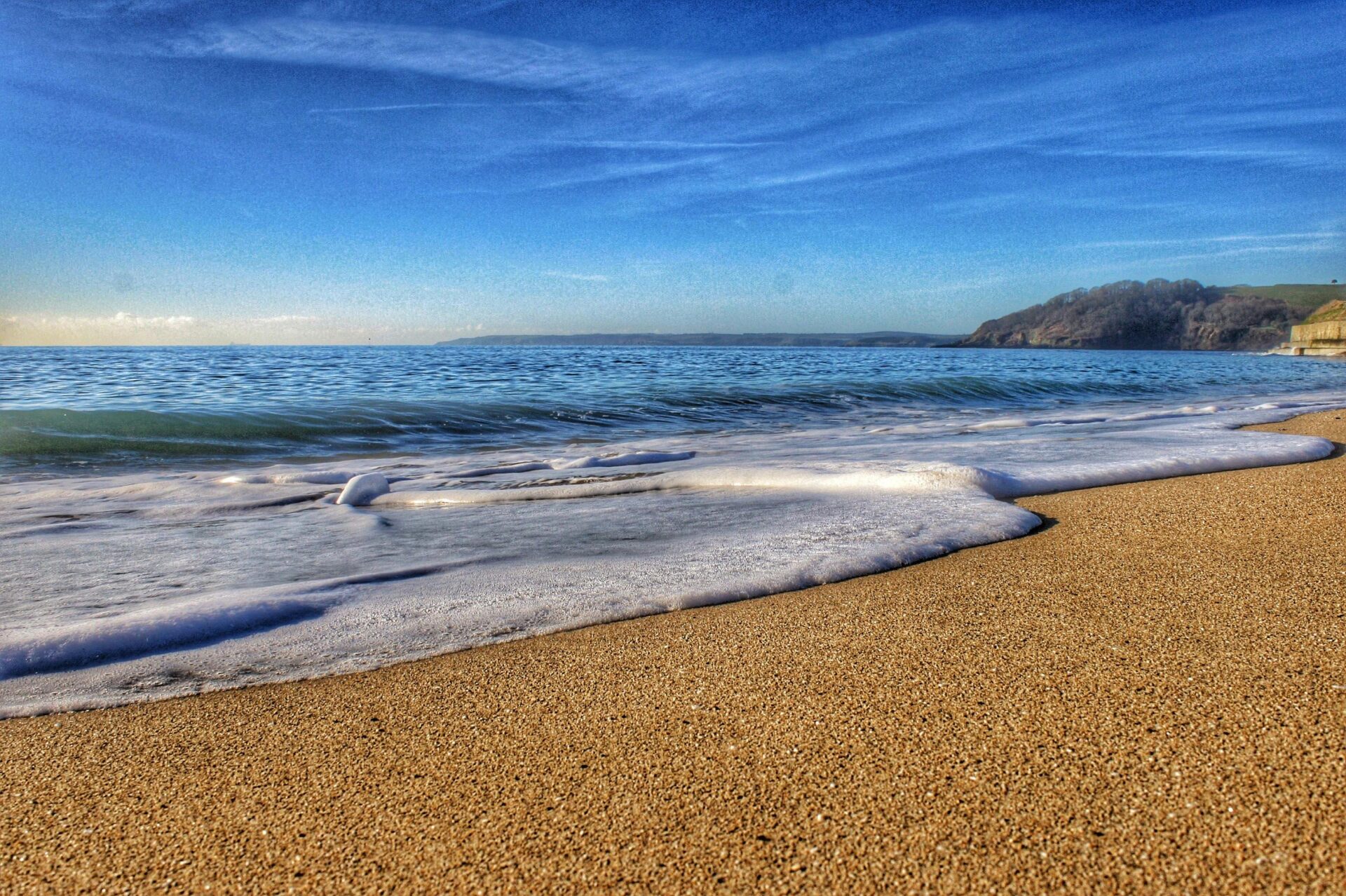
Hiking Cornwall’s Coast Path: What Makes Each Season Unique?
Spring and autumn completely change the feel of the South West Coast Path. In spring, wildflowers fill the air with color and scent. Autumn brings dramatic skies and wild seas that leave a mark on your memory.
Spring’s Coastal Wildflowers
In spring, I see the coast at its brightest. Coastal cliffs bloom with thrift and sea campion, painting everything pink and purple. Bluebells pop up in tucked-away spots, and gorse lights up the path with yellow.
I especially love the meadows near Porthcurno or on the Lizard Peninsula. The air feels crisp, and the evening light seems to last forever. Watching the sun set over a field of flowers is something I wait for every year.
If you walk in May or early June, you’ll catch the wildflowers at their best. The weather stays mild, rarely too hot, and the crowds haven’t arrived yet. It’s easy to find a quiet place with just the sound of waves and the smell of grass.
Key spring highlights:
- Wildflowers peak in late May
- Mild temperatures, long daylight
- Fewer hikers on the trails
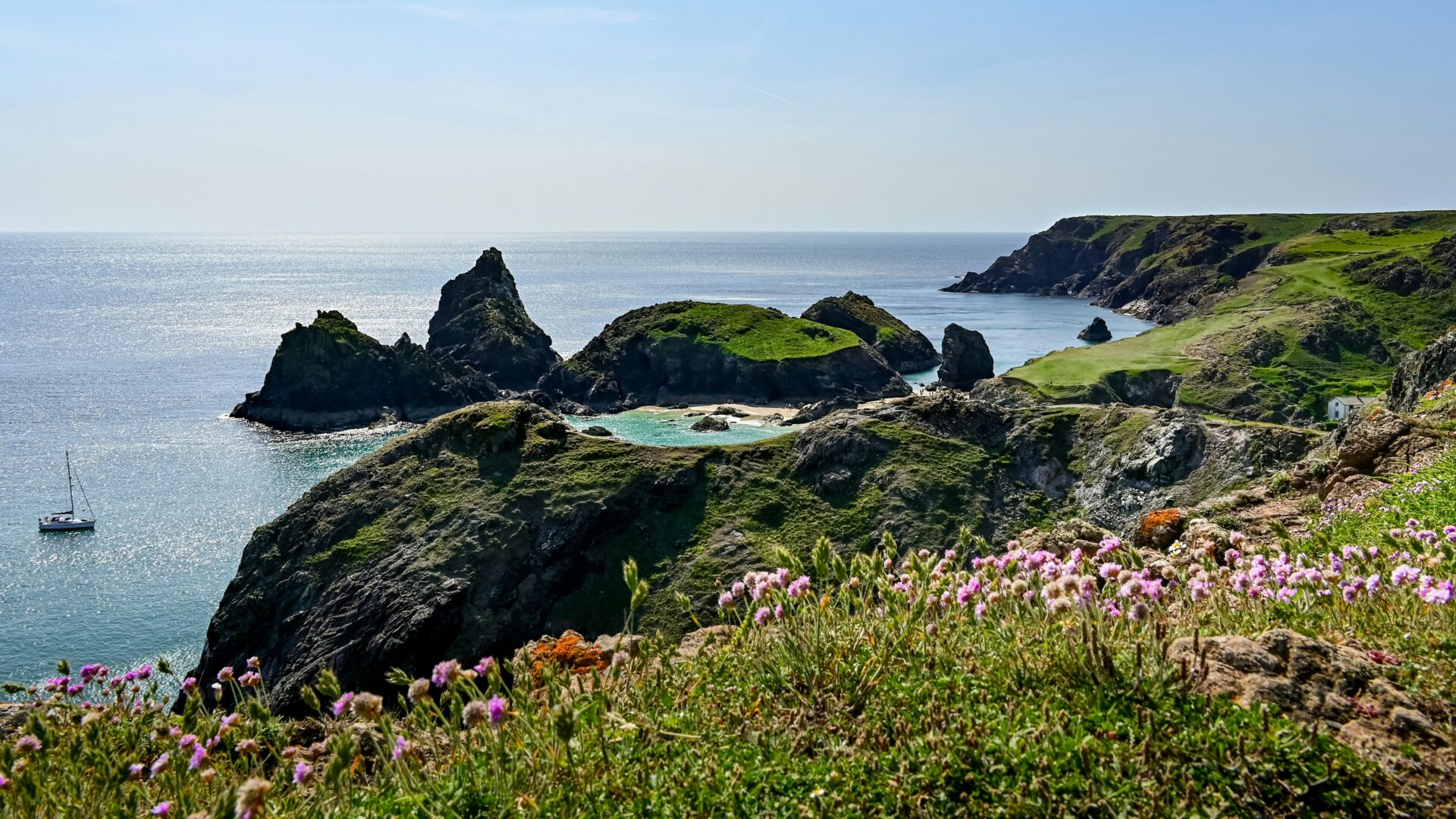
Autumn Storms and Rugged Landscapes
Autumn along the Coast Path feels like a different world. When September turns to October, the sky seems to stretch wider and the air gets sharper. Clouds pile up over the Atlantic, and waves slam the rocks even harder.
Walking the cliffs in a storm feels electric. Wind tugs at my jacket, salt fills the air, and sometimes the sunset just explodes through breaks in the clouds, reflecting off wet sand.
Moss and bracken turn gold and brown. Villages go quiet, and the coast feels wilder. I stop more often, just to watch seabirds or listen to thunder rolling far out at sea.
Notable autumn features:
- Fast-changing, dramatic skies
- Wildest waves and winds
- Fiery sunsets, fewer tourists
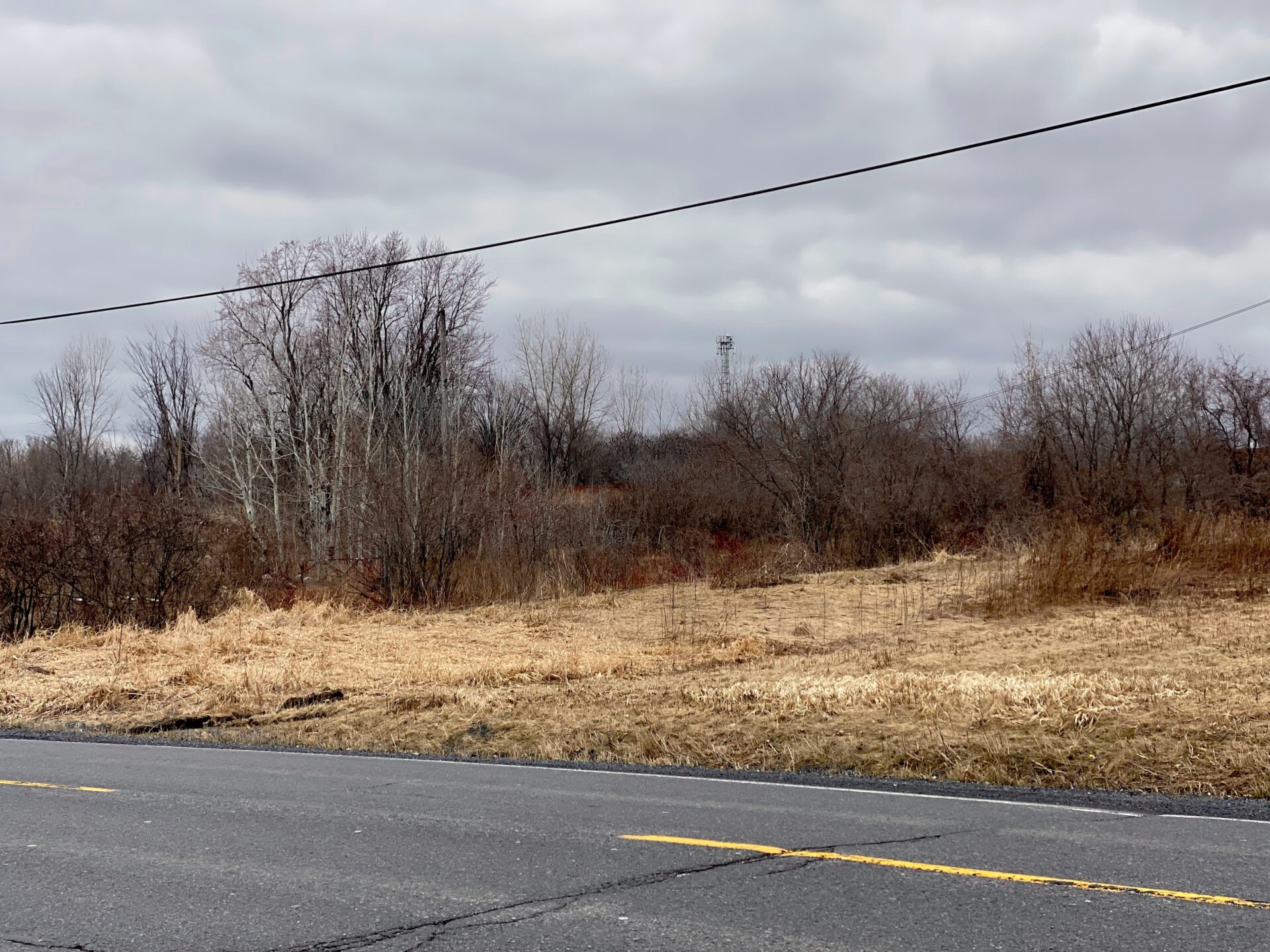
Floral Spectacle: Cornwall’s Coast Path in Spring
Hiking the Coast Path in spring means wandering through wildflowers with the sea beside you. Every turn brings a new burst of color, and sometimes the sunsets look even brighter framed by petals.
Types of Spring Flowers Along the Trail
Early spring wakes up the hedges and trails with bluebells, red campion, and buttercups. Thrift (sea pinks) clusters along the path, gorse blooms gold, and sometimes wild garlic scents the air.
Primroses are a favorite of mine, popping up on shady slopes. I spot violets and cowslips too, sometimes growing out of old stone walls or meadows just off the trail.
Each flower seems to pick its own spot—bluebells like the shelter, thrift hugs the windy cliffs, and gorse goes pretty much anywhere. Mid-April through late May, the whole trail looks like a painting.
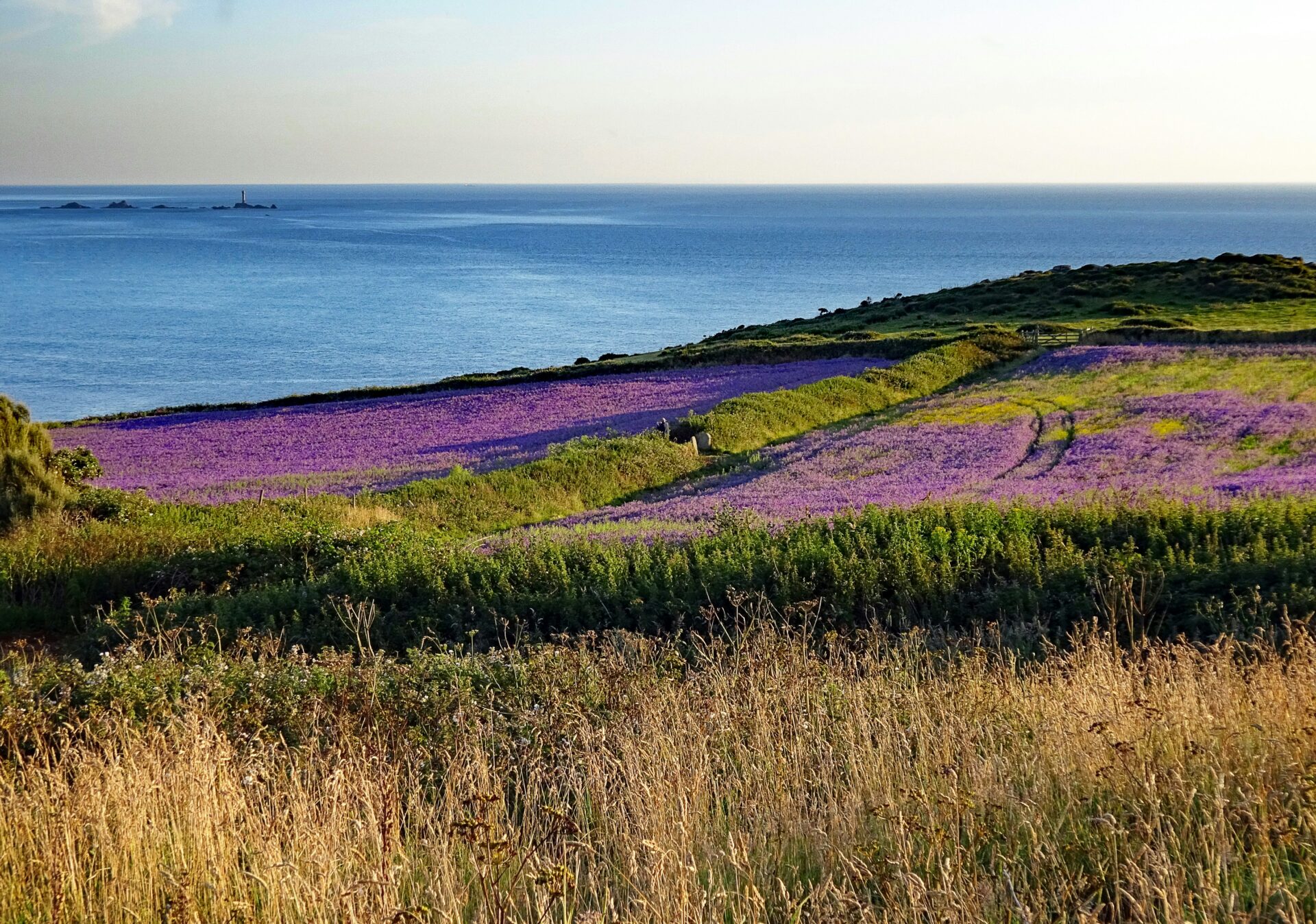
Best Spots for Wildflower Viewing
Some stretches are just made for wildflower fans. Near St. Ives, heading toward Zennor, thrift and campion cover the cliffs.
Around The Lizard, especially between Kynance Cove and Mullion, I see rare orchids, bluebells, and seas of scabious.
Polruan to Polperro is another favorite, with sunny headlands and valleys bursting with color.
Here are my top wildflower spots:
- St. Ives to Zennor: Thrift, sea campion
- The Lizard Peninsula: Bluebells, orchids, gorse
- Polruan to Polperro: Red campion, buttercups
Trails here are well-marked, with plenty of places to stop, picnic, or snap a photo.
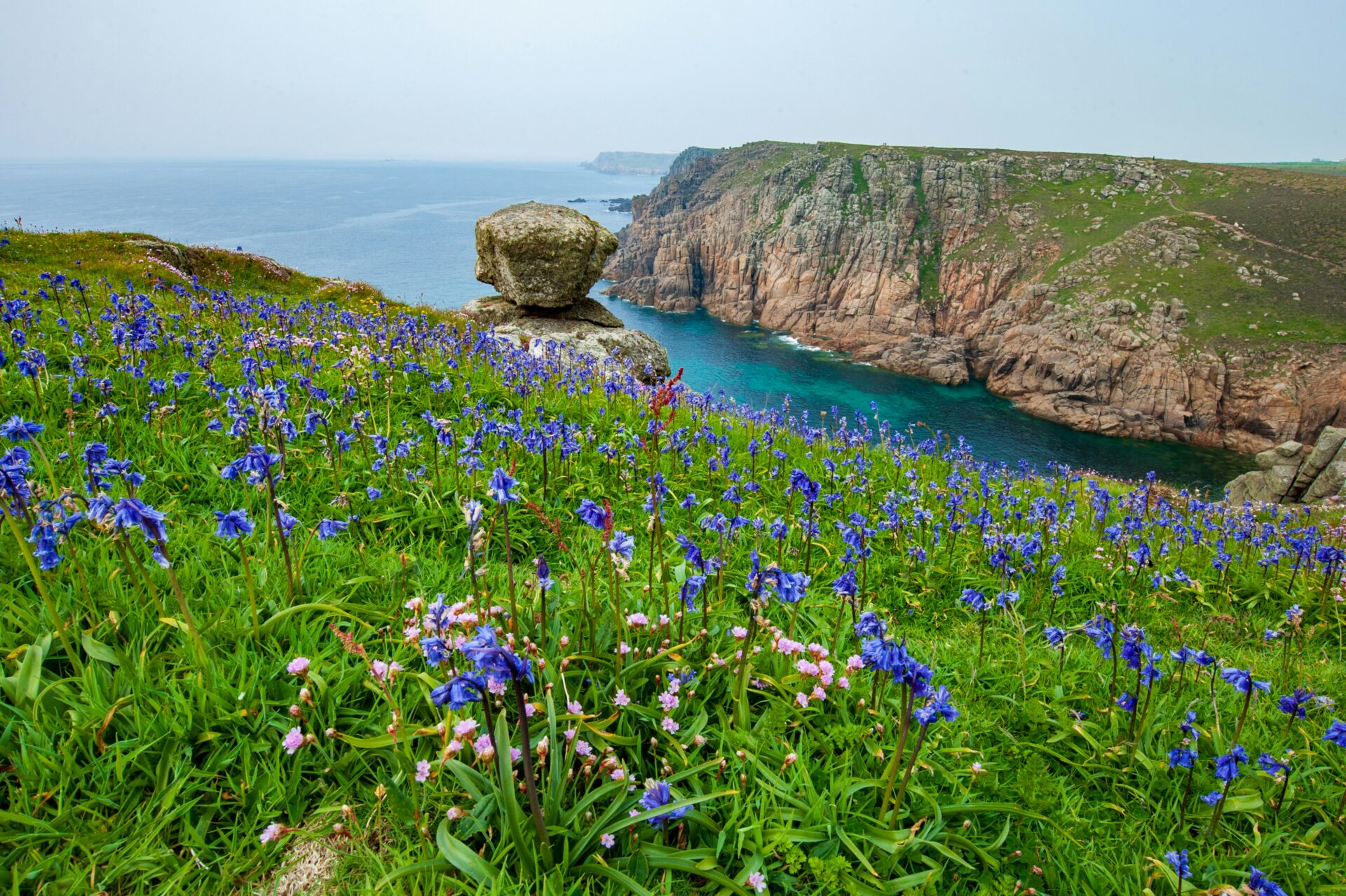
Capturing Coastal Sunsets Among Blooms
I always try to catch a sunset from the cliffs or headlands, wildflowers in the foreground and golden light on the sea. Some of my favorite sunsets happened near Land’s End, where thrift and campion glow pink and orange.
A tip—bring a blanket and a picnic to enjoy the sunset in comfort. Evenings are quieter, and the flowers look even better in low sun.
For photographers, the ‘blue hour’ after sunset softens everything—perfect for dreamy wildflower shots. I like to linger until it’s almost dark, with seabirds calling and waves in the background. Spring feels magical then, with blooms underfoot and the last light fading.
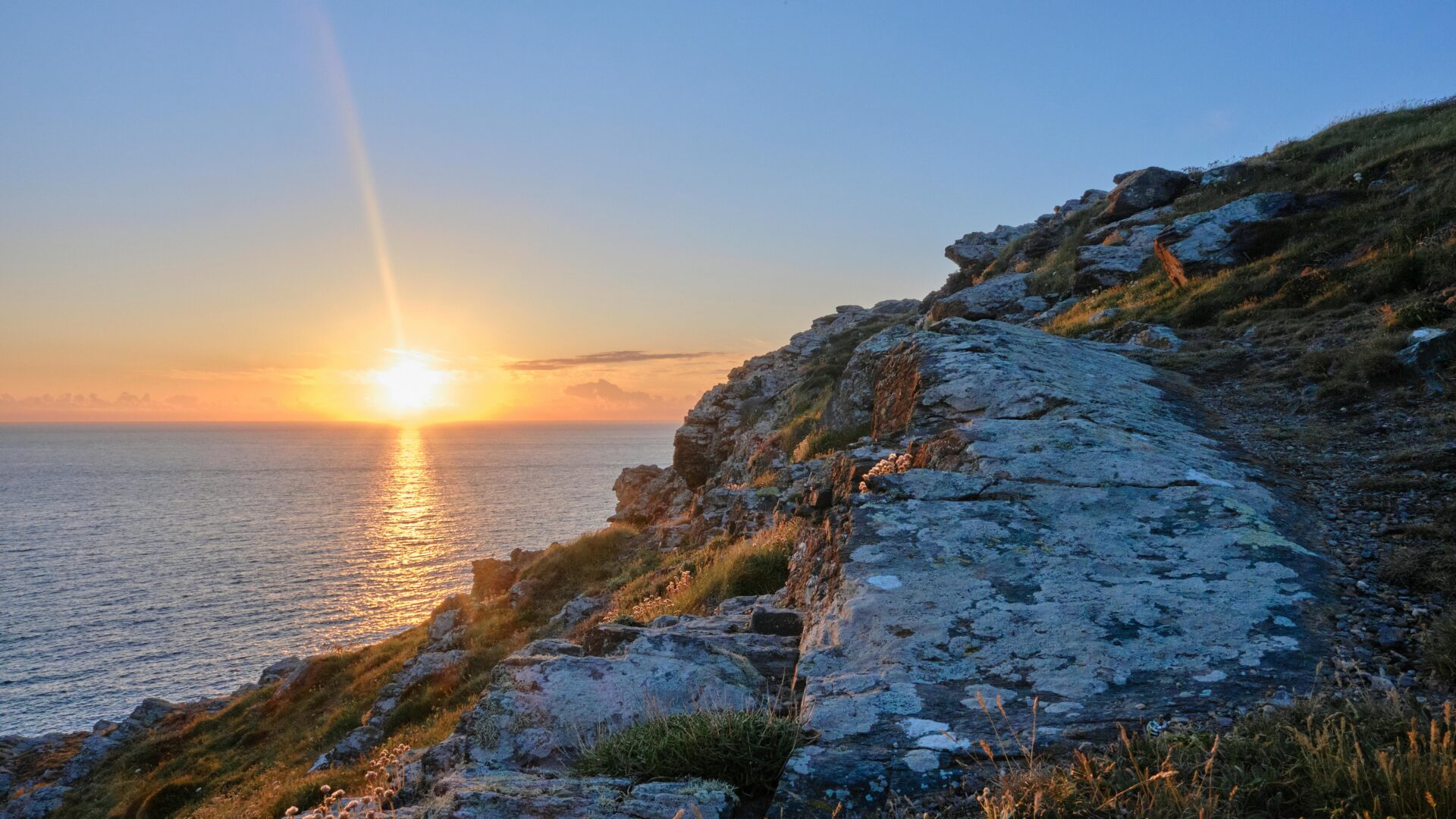
Dramatic Autumn: Storms, Seascapes, and Adventure
Autumn storms turn the Coast Path into a wild, thrilling place. The sea feels closer, cliffs seem steeper, and every gust of wind adds excitement.
Chasing Stormy Weather on the Coast Path
Some of my best memories are autumn days when the sky goes dark and the sea turns slate grey. Wind blasts salt spray over the path, and gulls wheel overhead. Clouds race over the headlands, waves crash below—it’s all so real and intense.
I check the weather and try to catch the edge of a storm, not walk straight through it. Places like Zennor or Land’s End feel most alive in wild weather. I watch waterfalls appear where cliffs were dry days before, and rivers surge with new energy.
Nature shows its wildest moods. Each step between wind-battered headlands or along cliff tops with heather clinging tight, I feel the season’s unpredictability and beauty.
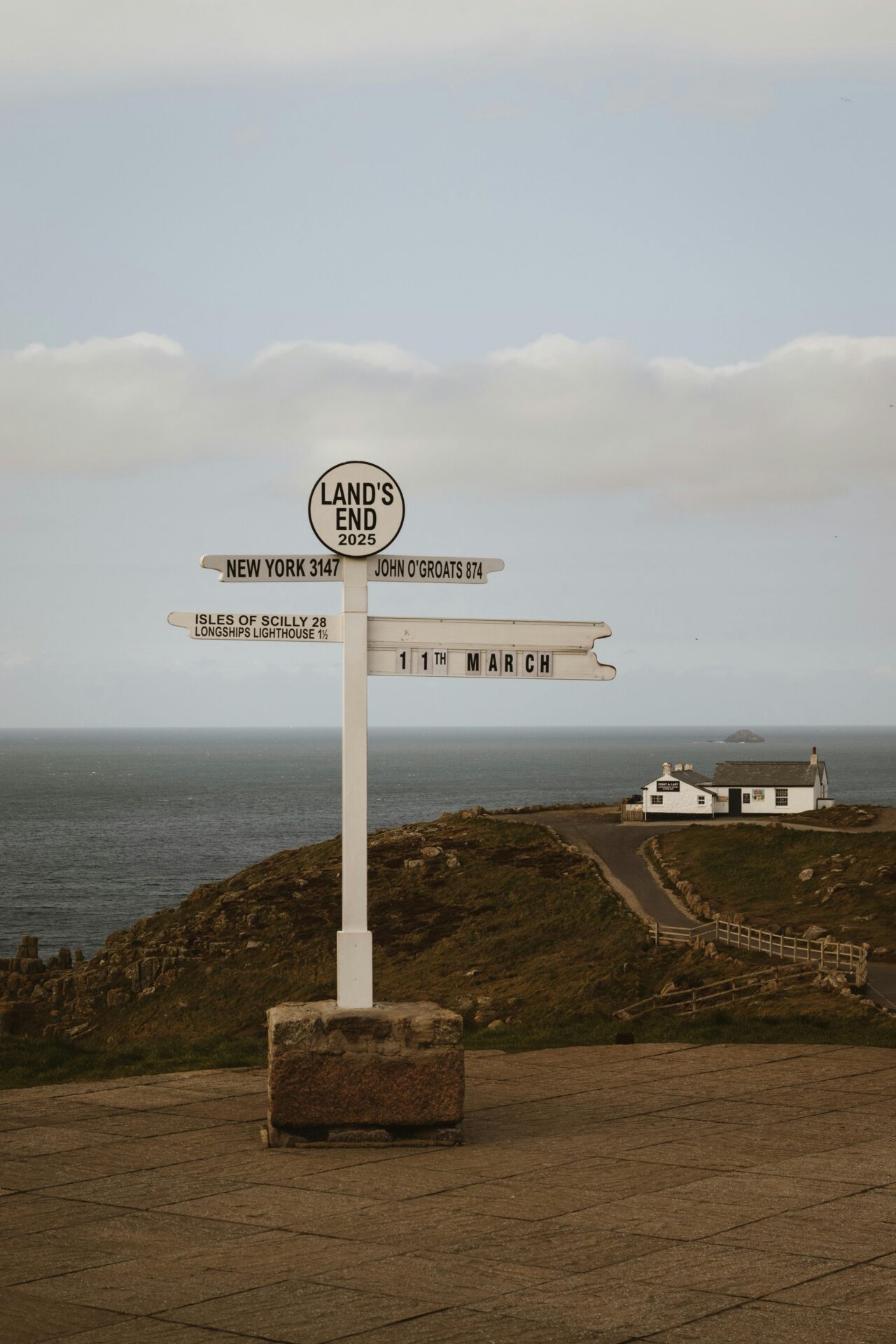
Safety Tips for Autumn Hiking
Autumn brings more risks, so I plan ahead and stay safe. I skip hiking in heavy rain or strong wind warnings. Muddy, slippery paths—especially on cliffs—mean I wear sturdy boots with good grip.
Here’s what I always bring for an autumn hike:
- Waterproof jacket and trousers
- Warm layers (it gets cold fast)
- Hat and gloves
- Headlamp
- Charged phone and a map
I tell someone my route and when I’ll be back. If streams swell or paths flood, I turn around instead of risking it. I always check tide times if I’m near beaches or coves.
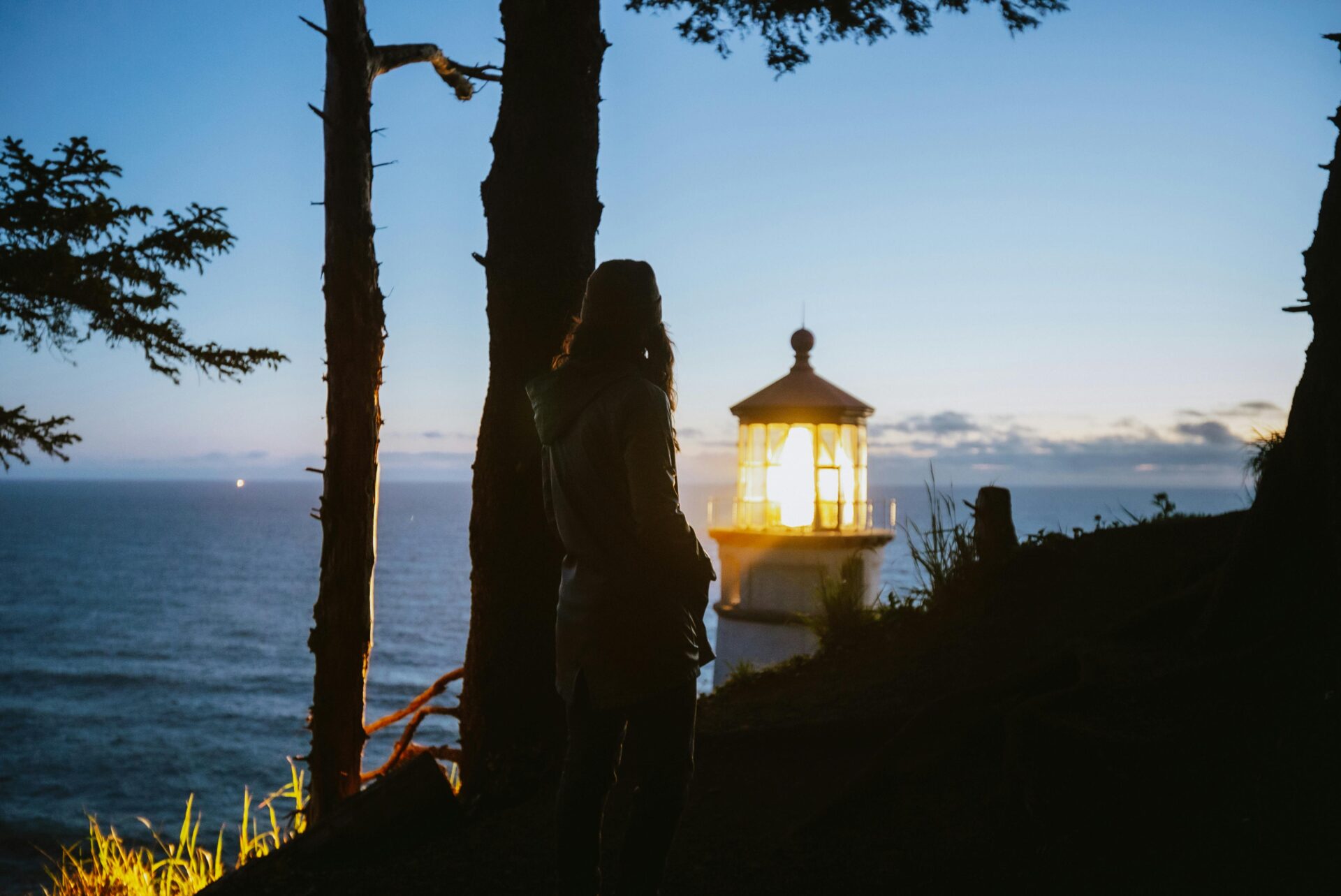
Waterfalls and Swollen Streams in the Fall
Hidden waterfalls appear when autumn rain soaks the hills. I’ve seen Poltesco’s falls double in size and Bodmin Moor’s rivers surge over stones, making each visit a surprise.
When trails cross streams, water often runs higher than in summer. Sometimes stepping stones disappear underwater. I pause to listen—water thunders in ditches and pools, turning calm spots into noisy, lively places.
Finding a waterfall in full flow feels like stumbling on a secret. I always pack waterproof bags for my camera, just in case I want to get that shot and stay dry. Autumn shows off the Coast Path’s wild water—but you have to brave the rain to see it.

Personal Experiences: Choosing Between Spring and Autumn
Spring and autumn both bring something special to Cornwall’s Coast Path. One bursts with color and life; the other cranks up the drama with wild weather and surf.
Memorable Encounters in Blooming Season
In spring, cliffs explode with vivid wildflowers. Bluebells and thrift line the paths, swaying in the breeze. The coast feels alive, with gentle sun and clear air.
Longer, milder days make early mornings perfect for catching sunlight over the Atlantic. Birdsong sounds sharper, and sometimes I spot lambs near the hedges. The trail smells like gorse and fresh grass.
If you love pausing for photos or just soaking in the view, spring is hard to beat. The ground stays firm and dry, great for a relaxed pace or scrambling on rocky outcrops. Wildlife is busy, and every mile feels new.

Adventures and Challenges During Storm Season
Autumn is a wilder ride. Winds pick up, and I watch rain clouds chase the horizon. Hiking becomes a test of bracing against the elements.
Cliffs feel more remote, with huge waves below and mist rolling over the fields. Each step can be a challenge—slippery rocks, muddy patches, and gusts that force me to grip the trail tighter.
Still, there’s a beauty in it. The sea shifts color every hour, and the roar of surf drowns out everything else. The path empties out, giving you solitude and the thrill of Cornwall’s wild side. With the right gear and respect for the weather, it’s an adventure you won’t forget.
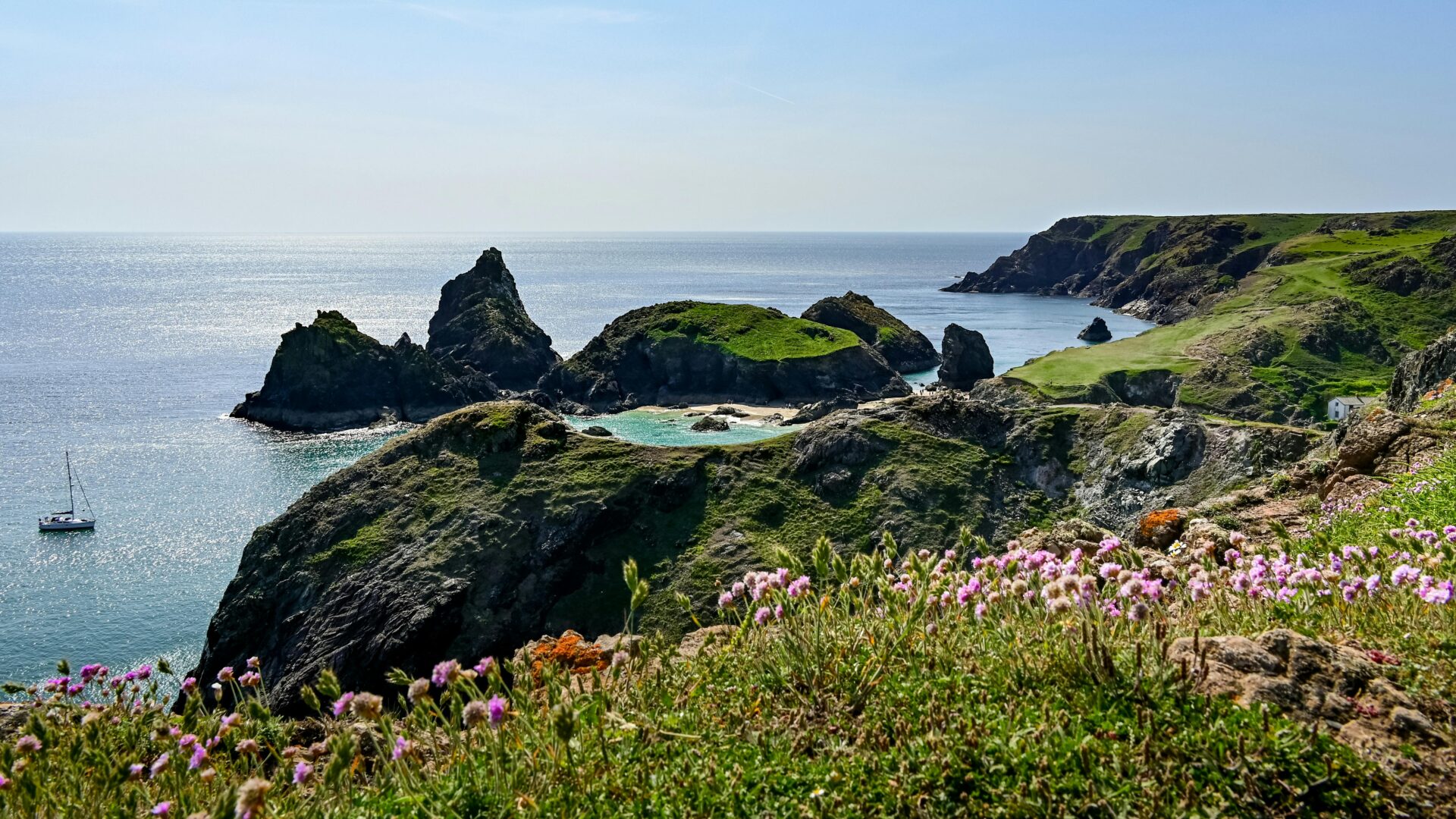
Essential Tips for Planning Your Coastal Hike
Planning a Cornwall hike means more than picking a trail and tying your boots. I’ve learned that getting around, packing smart for the season, and finding a quiet spot to climb really matter.
Using Public Transport on Cornwall’s Coast Path
I use Cornwall’s buses and trains a lot, especially for point-to-point hikes. Local buses—like the Coastal Bus (numbers change by route)—link most villages. I like leaving the car behind and not having to backtrack.
Train stations sit in towns like St Ives, Penzance, and Looe. Main rail lines run through Plymouth, then branch into Cornwall’s smaller towns. Timetables shift, so I always check ahead. Weekends and holidays sometimes mean fewer services—I’ve been caught out before.
In spring or autumn, I plan for crowds or limited transport. Spring buses fill up fast. In autumn, short days mean I double-check the last bus or train. Most places accept contactless cards now, which makes things a lot easier.
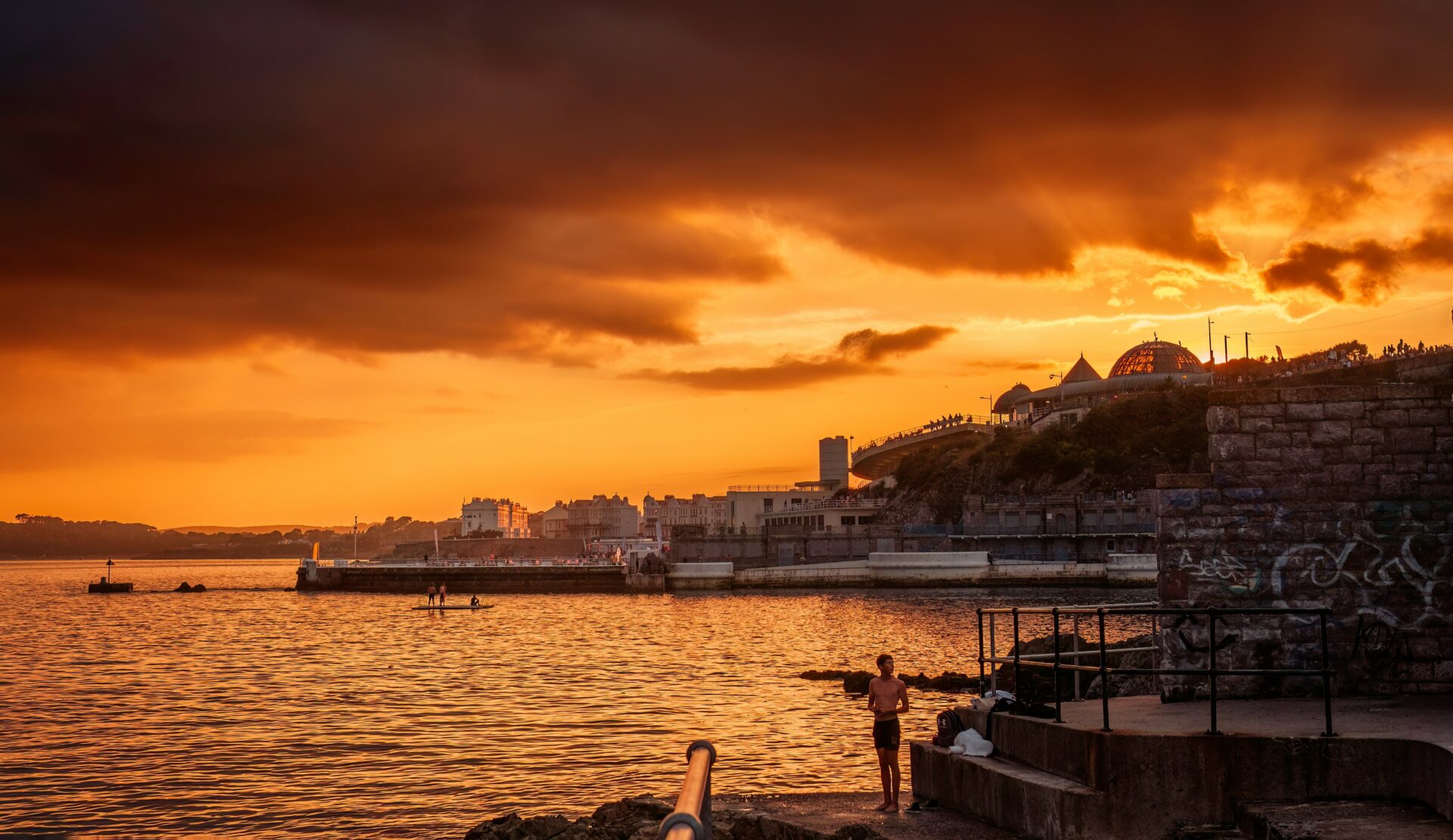
Packing Essentials for the Season
Packing always feels like a puzzle, and honestly, it changes a lot depending on whether I’m heading out during flower-filled spring or bracing for those unpredictable autumn winds.
In spring, I never leave home without a light waterproof jacket—showers seem to sneak up when you least expect them.
Layers are a must. Mornings start off chilly, but by the afternoon, I’m usually peeling things off as the sun comes out.
My backpack usually looks something like this:
| Spring | Autumn |
|---|---|
| Lightweight raincoat | Sturdy, waterproof shell |
| Sunglasses & sunhat | Warm hat & gloves |
| Extra water | High-energy snacks |
| Binoculars for birds | Thermal base layers |
When autumn rolls around, storms really pick up.
I make sure my boots are totally waterproof and can handle rough, muddy trails.
Wind comes out of nowhere, and sometimes it feels like it could knock me over.
I always toss in a map or GPS device, just in case fog rolls in and the trail gets tricky to follow.

Where to Find Secluded Climbing Spots
When I hike along Cornwall’s coast, I usually crave the rush of a quiet climbing session. The granite cliffs near Bosigran? They’re my go-to—way less crowded than the big-name spots, and honestly, the sea views are just wild.
I always check for access details. Some crags sit on private land, so I pay attention to any posted signs or what the locals say.
If I want real solitude, I’ll head out early in the morning. Late afternoons get busier, especially when tourists flood in. I’ve found that chatting with local climbing clubs or flipping through guidebooks can point me to those hidden gems.
For safety, I always pack extra grip shoes and toss a basic first aid kit in my bag. The weather here flips fast. Some climbs even have tidal cut-offs, so I keep an eye on tide schedules. It’s tempting to just chase after the most beautiful rocks, but doing a bit of homework keeps me out of trouble and lets me soak up those peaceful, unique climbs.

